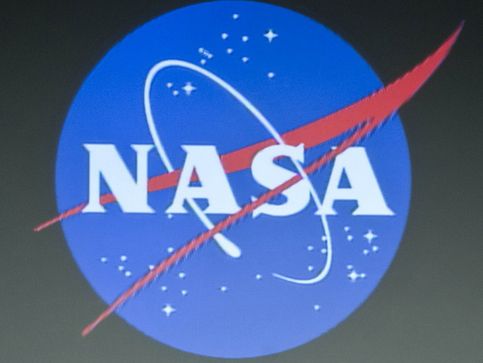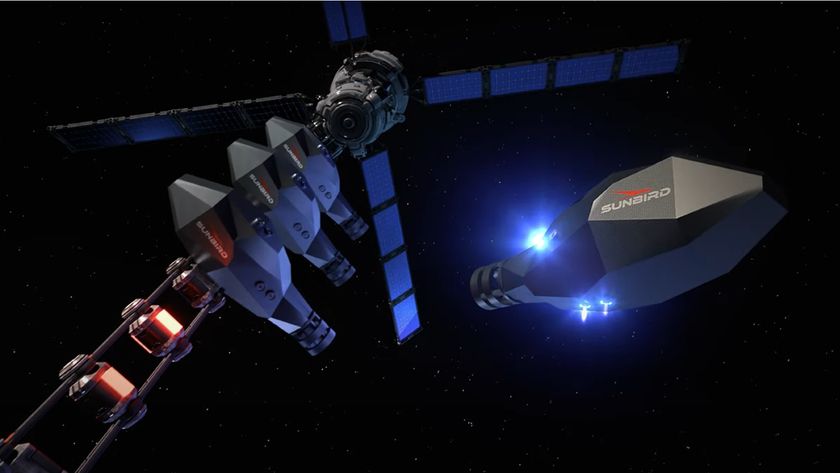Highlights of NASA's 2014 Budget Request Revealed

The proposed budget for 2014 unveiled by President Barack Obama and White House officials today includes $17.7 billion for NASA, a $50 million decrease from the space agency's 2012 funding level.
NASA's proposed 2014 budget will include funding for the agency's ongoing human spaceflight program for deep-space exploration of an asteroid or Mars, as well as support for private space taxis to launch American astronauts on trips to and from the International Space Station.
Bolden will discuss NASA's 2014 budget during a White House press conference today at 1:30 p.m. EDT (1730 GMT) and a NASA teleconference today at 3 p.m. EDT (1900 GMT). You can follow the NASA 2014 budget briefings live on SPACE.com, courtesy of the White House Office of Science and Technology Policy and NASA TV.
The space agency's plans for a new mega-rocket, the Space Launch System for deep-space exploration, as well as the James Webb Space Telescope — the infrared successor to NASA's long-lived Hubble Space Telescope. Read on for a look at the highlights of NASA funding under the 2014 budget proposal, according to White House documents.
The 2014 budget proposal for NASA will do the following:
- Provides $17.7 billion in discretionary funding for the National Aeronautics and Space Administration (NASA), a decrease of 0.3 percent, or about $50 million, below the 2012 enacted level. While making tough choices, the Budget reinforces the agency’s current balanced portfolio of aeronautics and space technology development, Earth and space science, the development of rockets and capsules to carry explorers deeper into space, and the use of innovative commercial partnerships for crew and cargo transport to the International Space Station.
- Includes funding needed to develop a Commercial Crew capability, with the intent of supporting a new industry that regains the capability to send American astronauts into space from U.S. soil and ends the need to pay foreign providers to transport American astronauts to the International Space Station.
- Increases investment in space technologies, such as advanced in-space propulsion and space propellant storage, which are necessary to increase America’s capabilities in space, bring the cost of space exploration down, and pave the way for other Federal Government and commercial space activities.
- Fully funds the Space Launch System heavy-lift rocket and Orion Multi-Purpose Crew Vehicle, two key elements for pushing the boundaries of human space exploration. This funding level will enable a flight test of Orion in 2014 and the Space Launch System in 2017.
- Keeps development of the James Webb SpaceTelescope, the more powerful successor to the Hubble SpaceTelescope, on track for a 2018 launch.
- Provides over $1.8 billion for Earth Science to revamp the Landsat program, develop climate sensors for the Joint Polar Satellite System, and conduct numerous other satellite and research efforts.
- Begins work on a mission to rendezvous with—and then move—a small asteroid. Astronauts would later visit the asteroid and return samples to Earth, achieving one of the agency’s major goals in a more cost-effective manner.
- Continues the agency’s important role in the Nation’s aeronautics research and development portfolio, including a new initiative to make lighter composite materials more easily useable in aviation.
- Funds research on the International Space Station, while identifying efficiencies in operations and space flight support.
- Consolidates $47.5 million of small science, technology, engineering, and mathematics (STEM) education programs from across NASA into larger programs at other agencies to achieve the best return on investment, while attaining tangible Government-wide STEM education goals. The Budget preserves $67.5 million for the Space Grant and Global Learning and Observations to Benefit the Environment programs at NASA, as well as key minority-serving education programs, and refocuses an additional $26.8 million from other NASA education and outreach programs to facilitate the wider application of its best education assets in close coordination with the National Science Foundation, the Department of Education, and the Smithsonian Institution.
Follow us @Spacedotcom, Facebook and Google+.
Sign up for the Live Science daily newsletter now
Get the world’s most fascinating discoveries delivered straight to your inbox.













